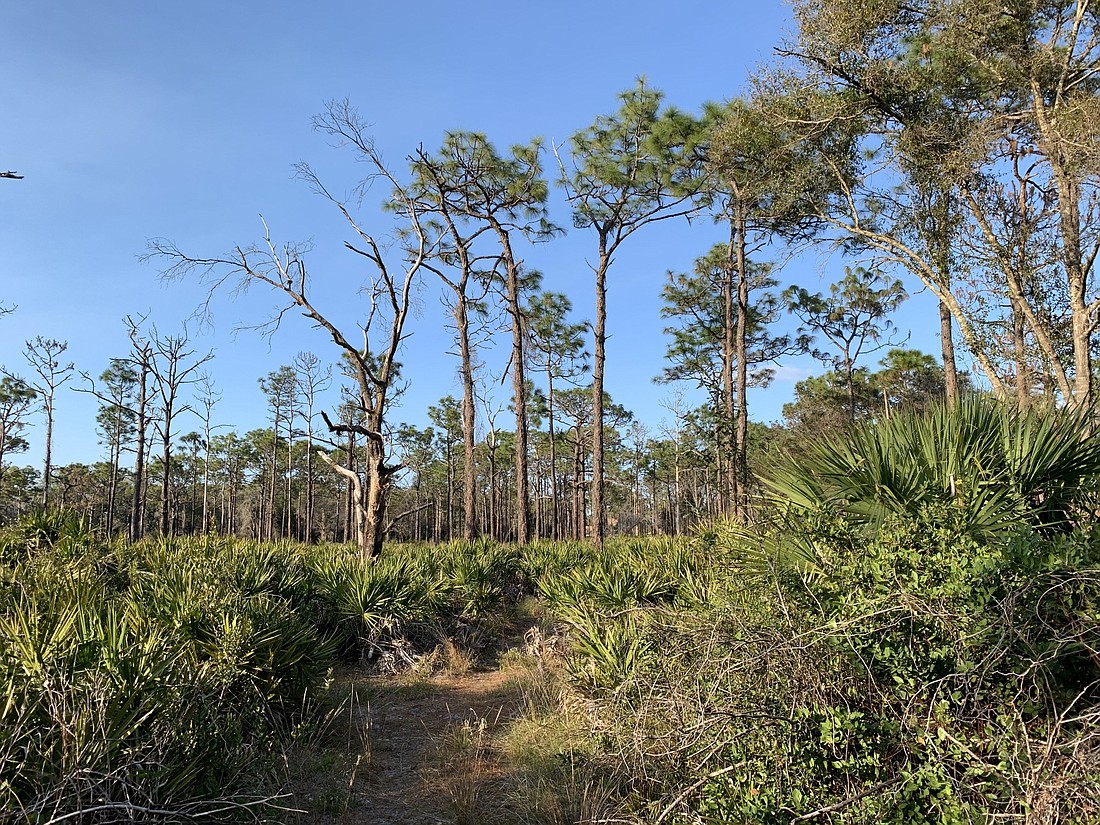- November 27, 2024
-
-
Loading

Loading

Tucked away in a corner of The River Club subdivision, the Floyd C. Johnson and Flo Singer Johnson Preserve at Braden River will become more accessible to the general public after construction on some long-awaited improvements begin as early as April.
The preserve was acquired by Manatee County in 2018 for $3 million. Included in that amount was a $1,029,000 donation from the Conservation Foundation of the Gulf Coast and a $500,000 donation by the Floyd C. Johnson & Flo Singer Johnson Foundation.
The preserve consists of almost 44 acres of natural landscapes, with 32.9 acres being the county’s purchase from Myarra Property Joint Venture and 11.6 acres being a donation from Carl Bergstresser.
It is home to such fixtures of wild Florida as the longleaf pine and the gopher tortoise.
At the time of the preserve’s purchase to stop the area from being developed, plans for additional features were announced, including shell paths, a shell parking lot, picnic tables and an information kiosk.
Read more: Conservation concepts roll out for Sarasota County-owned Quads land
“People are pleased that the land was saved, but also the habitat for the animals and the river,” said Brenda Russell, a member of Keep Woods, which worked to save the area from development. “We’re happy, but we would still like to see it finished.”
After no visible progress between 2018 and 2022, residents began to wonder why these seemingly simple additions were so long in the works. Michael Elswick, division manager of the Natural Resources Division in the county’s Parks and Natural Resources Department, said he expects construction to be underway in April or May and complete by early summer.
Elswick said that while he cannot speak on the topic of delays at the procedural level, it’s normal for environmental projects such as this to take two or more years to complete, and there have been issues with stormwater management, tree conservation, and plans to offer a sidewalk system better integrated with that of the neighborhood.
While the project obtained a state permit several months ago, Elswick’s division is still working with the Building and Development Services Department to obtain permits at the county level.
He said tech consultants are more directly involved in the permit process this time, which is “just another layer of safeguards.”
“They might ask different questions and have different procedural elements that are more important to them,” he said. “But it’s all the same plans that are being presented. We love to see them do their job. Whether it’s us building a reserve park or whether somebody’s building a Kmart, we’re glad they apply the same level of scrutiny and thoughtfulness.”
Elswick had hoped construction on the shell parking lot would follow a path similar to the one at Perico Preserve. Since piles of shell are pervious, meaning they can hold and release water, at Perico, a vegetative buffer was used to contain stormwater runoff. At the Johnson Preserve, the process required the creation of swales, small depressions in the ground to contain rainwater while it percolates into the soil.
Elswick said his team was “surprised” by this requirement. “That kind of sent us back to the drawing board in terms of having to redesign and resubmit the permit applications. I don’t know if there was a rule change or if it was interpreted differently,” he said.
Although the parking lot will be small — only eight spaces — Elswick noted, “We could easily impact a neighbor. We could send a lot of rainwater into their yard that was never going into their yard before. So, they would look at and review and do some calculations and see how much water we’re intercepting.”
Additionally, the division must follow the construction boundaries agreed upon with the Conservation Foundation of the Gulf Coast. Once the division had completed a survey of the trees in the area, they realized that to avoid cutting down too many long-leaf pines, they would need to readjust the shape of the parking lot and the orientation of the pavilions, and they sent a new legal sketch to the board for approval.
“It’s kind of a boring process, nothing particularly exciting,” Elswick said. “Just more hoops. More steps in the process than we originally anticipated.”
Finally, the sidewalk system needed to be updated to include further connectivity with the neighborhood sidewalks.
The county has been able to perform some tasks that don’t require permits, including establishing safe fire lines and executing three successful controlled burns in the area.
While acknowledging that the kayak launch, at 100 to 150 yards from the preserve entrance, does require visitors to carry their kayaks, he said there are no plans to add an additional kayak launch.
Gary Hebert, president of Keep Woods, said “I think most of us are just happy that the property was saved and wasn’t made into a gated community.”
“I’m happy with what the county decided to do,” he said emphatically. “I understand we’re not in a big rush to have anything done there.”